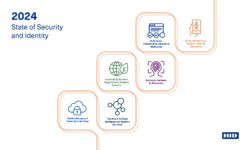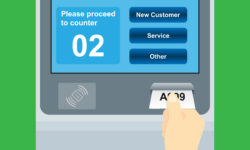Survey: Integrating Access Control With Other Systems Poses Significant Challenges
The latest Campus Safety Access Control and Lockdown Survey finds adoption rates remain robust, but new challenges are emerging.

The latest Access Control and Lockdown Survey by Campus Safety Magazine found that more campuses are struggling to find a good integrator to install their access control solutions. Now 24% say this issue is somewhat to extremely challenging for them, compared to two years ago when that percentage was only 19%.
FRAMINGHAM, Mass. — Security Sales & Integration sister publication Campus Safety has released its 2019 Access Control and Lockdown Survey, with participation from more than 400 K-12, university and healthcare protection professionals.
Nearly nine in 10 respondents to the survey said they have adopted new or improved lockdown/shelter-in-place policies and procedures in the past two years and/or are considering doing so in the next two years.
With so much focus on lockdown, it’s not surprising that locks and/or door hardware are popular equipment purchases. Overall, 85% of respondents said they have purchased and/or are considering purchases of this type of solution.
Card and/or biometric access control systems are also popular, with more than three out of four respondents saying they’ve purchased and/or are considering purchases of this type of equipment in the next two years. In fact, compared to 2017 when CS conducted its last survey on access control and lockdown, there has been a slight (4%) increase.
Visitor management systems and secure front entrance vestibules continue to be popular on K-12 campuses (more than eight in 10) and healthcare facilities (more than six in ten). About 60% of institutions of higher ed, however, are not considering these solutions, probably due to the fact that most college campuses are much more open than schools or hospitals. Overall, there has been a 7% increase in demand for visitor management solutions and a whopping 14% increase in demand for secure front entrance vestibules.
Additionally, 8% more respondents this year have purchased and/or are considering the purchase of window safety and/or security solutions compared to 2017, while there has been a 13% increase with fences.
Challenges: Integration, Lack of Expertise & Maintenance
Despite the robust interest in access control and lockdown — or perhaps because of it — some interesting challenges have emerged over the past two years. Problems with integrating access control with other security and public safety systems have jumped significantly. Now, 56% of respondents say this issue is somewhat to extremely challenging for them. That’s 10 percentage points more than in 2017.
Additionally, more campuses are struggling to find a good integrator to install their access control solutions. Now 24% say this issue is somewhat to extremely challenging for them, compared to two years ago when that percentage was only 19%.
Lack of access control expertise is also posing more of a problem. Now 26% say wanting to install more access control, “but I don’t know where to start” is an issue that is somewhat to extremely challenging. That’s seven percentage points more than in 2017. Hospitals are the only respondents that don’t have as much of a challenge with this issue.
Many campuses are also struggling with maintaining their locks and door hardware. This year’s survey found that 42% of respondents said their locks and door hardware have not been properly maintained, which is a 9% increase compared to 2017’s findings. Additionally, training and policy compliance is now an even greater struggle: 61% of respondents said “Students, staff, administrators and teachers are not trained on our access control policies or don’t follow our policies,” which is a 7% increase since CS’ last survey.
Problematic: Policies, Training & Personnel Issues
The level of problems with access control, lock and lockdown policies and personnel issues has remained constant since 2017. “Policies supporting our access control system(s) don’t exist or the ones we have need to be upgraded” continues to be the biggest problem in this subject category with 56% of respondents rating it as somewhat to extremely challenging, although nearly 70% of higher ed participants rate this issue as somewhat to extremely challenging. K-12 and healthcare campuses aren’t having nearly as many challenges with this issue as colleges and universities.
Not far behind policy problems are, “We don’t have enough staff to operate our access control system(s) and/or locks” and “Support/buy-in from students, faculty and/or staff is lagging.” About one in two respondents said these issues are somewhat to extremely challenging for them. Once again, higher ed is struggling most with both of these issues: 61% and 59% (respectively) rate these issues as somewhat to extremely challenging.
The level of challenges associated with physical access control problems has remained consistent over the past two years. An open campus layout is the most problematic of all of these issues, particularly for institutions of higher education and healthcare … around 80% rate this issue as being somewhat to extremely challenging.
Design and/or placement of windows also continues to be a pesky problem, with nearly two thirds of respondents saying it is somewhat to extremely challenging. The problem is particularly pronounced for higher ed and K-12 respondents.
Colleges are struggling with visitor management: More than 70% said it is somewhat to extremely challenging for them. Also, “Lack of metal detection, or our detectors need to be upgraded” is an extremely challenging issue for 27% of higher ed respondents.
Lockdown Capability Mostly Unchanged
Despite the significant amount of interest in access control, locks, lockdown and door hardware, the percentage of campuses that can lockdown hasn’t changed much since 2017. Slightly more campuses (4%) can now lockdown their campuses, additionally, now only 4% of respondents say they don’t know how much of their campus can lockdown, which is progress compared to two years ago.
Not surprisingly, K-12 schools/school districts have the greatest ability to lockdown. Nine in ten K-12 respondents said they can lockdown 75%-100% of their campuses. That’s a 5% increase over 2017.
Only 27% of higher ed respondents said they can lockdown 75%-100% of their campuses, which is understandable considering the open nature of colleges and universities. Still, that’s an 8% drop from two years ago.
Just under 60% of healthcare respondents said they can lockdown 75%-100% of their campuses, which is the same rate as in 2017.
On the bright side, in the past two years, campuses that can lockdown have seen a 12% increase in the number of facilities that can lockdown in 5 minutes or less. Now 71% can lockdown in that amount of time, compared to 59% in 2017.
The most common way that campuses lockdown is via a mechanical lock on a door, while the second most common way is via access control (PIN/ID electronic credential). There is quite a bit of variance in lockdown approaches, however.
Door locks are most commonly used by K-12 campuses (83%) for lockdown, while only 65% of colleges and universities and 53% of hospitals use door locks.
Only 23% of K-12 schools that can lockdown can do so via an access control system. About 30% of colleges and universities use access control while more than 40% of healthcare respondents said they use access control to lockdown.
More Than 1 in 2 Satisfied With Technology
Respondent satisfaction with the coverage and quality of their access control technology, locks and door hardware is mixed, with more than half rating both as good or excellent.
Compared to the results from CS’ 2017 Access Control Survey, 5% more respondents this year said the coverage of their access control/locks/door hardware is excellent. That being said, 8% fewer this year said their coverage is good.
Quality has dropped slightly from 63% of CS survey participants rating it as good or excellent two years ago to 56% rating it as good or excellent. However, the percentage of respondents who rate the quality of their access control/locks/door hardware as below par or poor remain virtually unchanged from 2017.
To download the complete survey results, go here. Registration is required.
(This article first appeared on campussafetymagazine.com.)
If you enjoyed this article and want to receive more valuable industry content like this, click here to sign up for our FREE digital newsletters!

Security Is Our Business, Too
For professionals who recommend, buy and install all types of electronic security equipment, a free subscription to Commercial Integrator + Security Sales & Integration is like having a consultant on call. You’ll find an ideal balance of technology and business coverage, with installation tips and techniques for products and updates on how to add to your bottom line.
A FREE subscription to the top resource for security and integration industry will prove to be invaluable.







